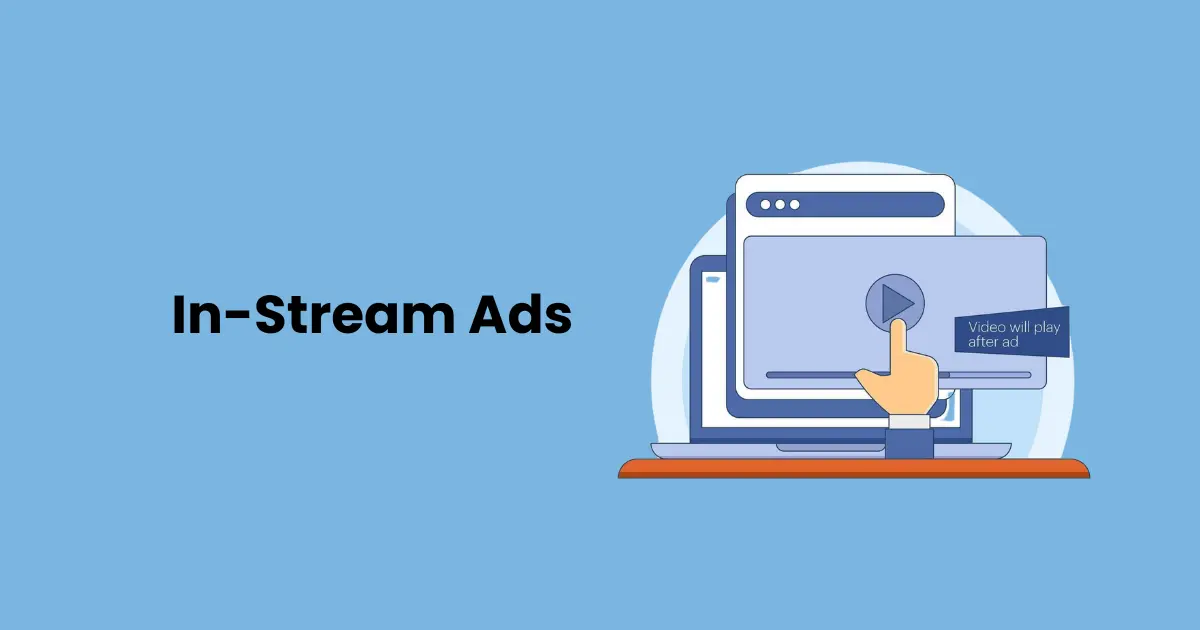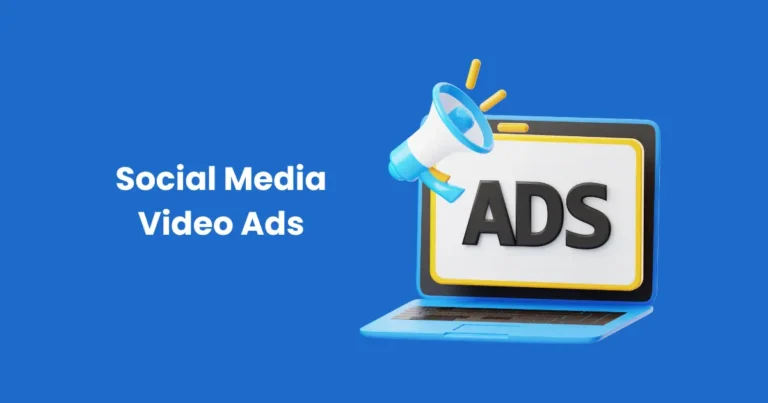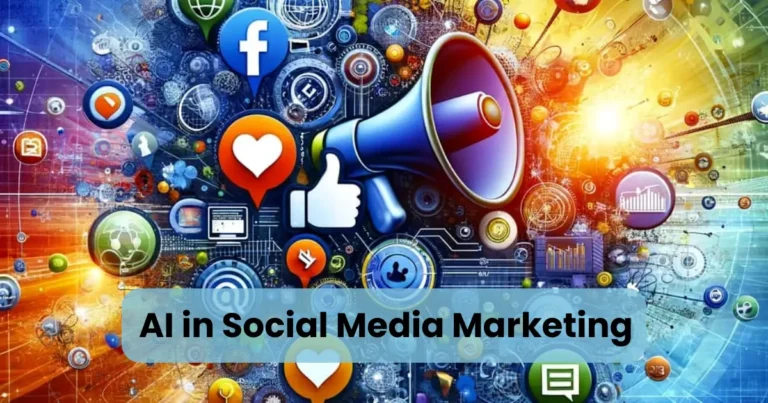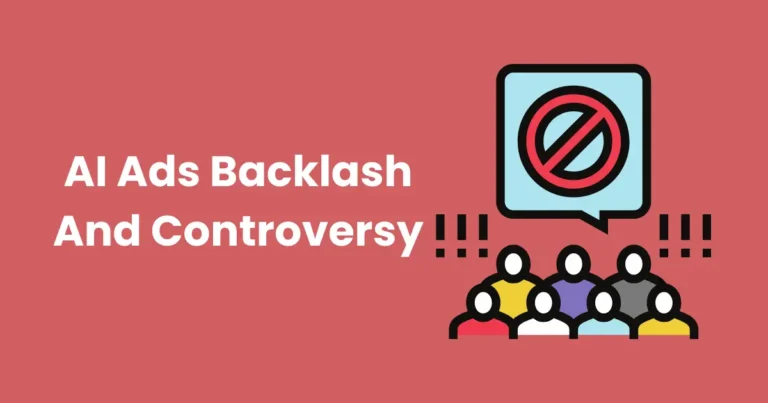In-Stream Ads | Types of In-Stream Ads

Contents
- 1 Types of In-Stream Ads
- 2 Benefits of In-Stream Ads
- 3 How In-Stream Ads Work
- 4 Tips for Creating Effective In-Stream Ads
- 4.1 1. Capture Attention Immediately
- 4.2 2. Keep It Short and Concise
- 4.3 3. Align Content with Viewer Interests
- 4.4 4. Focus on a Single Message
- 4.5 5. Include a Strong Call-to-Action (CTA)
- 4.6 6. Use Captions and Subtitles
- 4.7 7. Incorporate Branding Early
- 4.8 8. Optimize for Mobile
- 4.9 9. Leverage Emotional Appeal
- 4.10 10. A/B Test Your Ads
- 4.11 11. Ensure a Seamless Transition
- 4.12 12. Track and Analyze Performance
- 5 Best Practices for In-Stream Ads Success
- 5.1 1. Know Your Target Audience
- 5.2 2. Choose the Right Ad Format
- 5.3 3. Focus on High-Quality Visuals and Audio
- 5.4 4. Optimize for Mobile Viewers
- 5.5 5. Leverage Storytelling
- 5.6 6. Place Branding Strategically
- 5.7 7. Use Clear and Concise Messaging
- 5.8 8. Incorporate Call-to-Action (CTA)
- 5.9 9. Test and Refine Your Ads
- 5.10 10. Align with Video Content
- 6 Future Trends in In-Stream Advertising
- 6.1 1. Increased Use of Artificial Intelligence (AI)
- 6.2 2. Personalization at Scale
- 6.3 3. Interactive and Shoppable Ads
- 6.4 4. Growth of 5G and High-Quality Streaming
- 6.5 5. Rise of Augmented Reality (AR) and Virtual Reality (VR) Ads
- 6.6 6. Focus on Sustainability and Social Responsibility
- 6.7 7. Voice-Activated Ads
- 6.8 8. Programmatic Advertising Expansion
- 6.9 9. Shorter, Snappier Ads
- 6.10 10. Integration with Connected TV (CTV)
- 6.11 Conclusion
In the fast-paced world of digital marketing, in-stream ads have revolutionized the way brands engage with their audiences. These advertisements are strategically integrated into video content, ensuring they align seamlessly with the viewer’s experience. By appearing before, during, or after videos, in-stream ads captivate users’ attention in ways that traditional banner ads often fail to achieve.
With the growing popularity of video platforms such as YouTube, Instagram, and TikTok, the demand for in-stream ads continues to soar. They offer businesses an unparalleled opportunity to deliver targeted messages, improve brand recall, and drive meaningful actions, all while blending naturally into the user’s preferred content. Whether you’re looking to boost awareness, increase conversions, or foster deeper engagement, in-stream ads have become a critical tool for achieving these goals.
What Are In-Stream Ads?
In-stream ads are video advertisements that are seamlessly integrated into online video content, making them an essential component of digital advertising strategies. These ads play before, during, or after a video and are designed to engage viewers without disrupting their experience significantly. By aligning with the flow of the video content, in-stream ads effectively capture attention and deliver marketing messages more naturally.
These ads are commonly used on platforms like YouTube, Facebook, Instagram, and TikTok, where video consumption is at its peak. Depending on the format, in-stream ads can either be skippable or non-skippable, giving advertisers the flexibility to choose the approach that best suits their campaign goals. This ad format is particularly effective in increasing brand visibility, improving audience targeting, and driving higher engagement compared to traditional ad types like banners or pop-ups.
Whether it’s a quick six-second pre-roll ad or a compelling mid-roll ad within a longer video, in-stream ads cater to a wide range of marketing objectives. They not only create opportunities for businesses to connect with their audience but also enhance the viewer experience when crafted with relevant and engaging content.
Types of In-Stream Ads
In-stream ads come in various formats, each designed to align with specific marketing goals and video content placement. These types ensure that businesses can tailor their advertising strategies to maximize viewer engagement and campaign effectiveness. The three primary types of in-stream ads are:

1. Pre-Roll Ads
Pre-roll ads are the advertisements that appear before the video content begins. These ads typically last between 6 to 15 seconds and are an excellent way to grab the viewer’s attention right at the start. Pre-roll ads can be either skippable or non-skippable, depending on the platform and the advertiser’s objectives.
- Use Case: Ideal for building brand awareness or introducing new products.
- Example: A skippable YouTube ad that plays before a tutorial video.
2. Mid-Roll Ads
Mid-roll ads are shown during the video, often at a natural break in the content. These ads are usually longer than pre-roll ads, lasting anywhere between 15 to 60 seconds, and rely on the fact that viewers are already engaged with the video. Mid-roll ads are non-skippable in most cases, ensuring complete viewer exposure.
- Use Case: Best for delivering detailed messages or showcasing features of a product.
- Example: A mid-roll ad during a Facebook live stream or a long-form YouTube video.
3. Post-Roll Ads
Post-roll ads appear after the video content has finished. While these ads might not have as high retention rates as pre-roll or mid-roll ads, they can still be effective when paired with a compelling call-to-action (CTA). Post-roll ads often encourage viewers to take a specific action, such as visiting a website or purchasing a product.
- Use Case: Suitable for campaigns focused on conversions or retargeting.
- Example: A post-roll ad encouraging viewers to sign up for a free trial after watching an online webinar.
By understanding the different types of in-stream ads, businesses can strategically choose formats that align with their marketing goals, audience preferences, and the nature of the platform they’re advertising on. This ensures a more impactful and engaging ad campaign.
Benefits of In-Stream Ads
In-stream ads have become a cornerstone of digital advertising due to their ability to engage audiences effectively and deliver measurable results. Below are the key benefits of incorporating in-stream ads into your marketing strategy:

1. Enhanced Audience Engagement
Since in-stream ads are integrated directly into video content, they naturally capture the attention of viewers who are already engaged. Platforms like YouTube and Instagram prioritize user-friendly ad placements, ensuring minimal disruption while maximizing viewer interaction.
2. Precise Targeting Capabilities
In-stream ads allow advertisers to leverage advanced targeting tools. Advertisers can narrow down their audience based on demographics, interests, location, and even online behavior. This precision ensures that your message reaches the right people, improving the likelihood of conversions.
3. Improved Brand Recall
Video content is inherently more memorable than static ads. In-stream ads boost brand recall by combining visual, audio, and emotional elements that resonate with viewers. As a result, your brand is more likely to stay in the audience’s mind long after the ad ends.
4. Higher Click-Through Rates (CTR)
The interactive nature of in-stream ads often results in higher click-through rates compared to traditional ads. Call-to-action buttons, such as “Learn More” or “Shop Now,” encourage immediate action from viewers, driving traffic to your website or landing page.
5. Cost-Effectiveness
With platforms offering pay-per-view or pay-per-click options, in-stream ads are a cost-effective way to reach a large audience. Skippable ads, for instance, only charge advertisers if the viewer watches a significant portion of the ad, ensuring your budget is used efficiently.
6. Seamless Integration with Content
Unlike banner ads, which can feel intrusive, in-stream ads align with the flow of video content, providing a more natural viewing experience. This seamless integration reduces ad fatigue and increases the chances of a positive reception.
7. Support Across Multiple Platforms
From YouTube to Facebook and TikTok, in-stream ads are supported across various platforms. This versatility allows brands to reach diverse audiences and create multi-platform campaigns tailored to specific goals.
8. Measurable Performance Metrics
With detailed analytics available, in-stream ads provide valuable insights into campaign performance. Metrics such as views, click-through rates, and conversion rates help marketers refine their strategies and maximize ROI.
In-stream ads not only enhance the viewer’s experience but also provide businesses with a robust tool to achieve their marketing objectives. By leveraging these benefits, companies can drive engagement, boost brand visibility, and foster meaningful connections with their target audience.
How In-Stream Ads Work
In-stream ads operate within video content, delivering advertising messages to viewers at key moments of their video-watching journey. Their functionality is built on seamless integration with the platform’s video player and advanced targeting algorithms. Here’s a breakdown of how in-stream ads work:

1. Placement within Video Content
In-stream ads are designed to appear at specific intervals during video playback:
- Pre-roll Ads: Shown before the video starts.
- Mid-roll Ads: Played in the middle of the video, often during a natural pause or transition.
- Post-roll Ads: Displayed after the video ends.
These placements ensure the ads reach viewers when they are most engaged.
2. Ad Formats
Platforms offer different formats to suit various campaign goals:
- Skippable Ads: Viewers can skip the ad after 5 seconds, making them less intrusive. Advertisers are charged only if the viewer watches a significant portion or clicks on the ad.
- Non-Skippable Ads: These ads must be watched in full, typically lasting 15 to 30 seconds, ensuring the entire message is delivered.
- Bumper Ads: Short, 6-second non-skippable ads designed for quick and impactful messaging.
3. Targeting Options
One of the key features of in-stream ads is their ability to target specific audiences. Advertisers can tailor their ads based on:
- Demographics: Age, gender, income level, etc.
- Behavioral Data: Past online activity, interests, and purchase history.
- Geolocation: Specific regions or cities.
- Device Type: Mobile, desktop, or smart TV users.
This ensures the ad reaches the most relevant audience, maximizing its effectiveness.
4. Auction-Based Ad Placement
Platforms like YouTube often use an auction system for ad placement. Advertisers bid for ad slots based on their campaign budget and desired audience. The highest bidders with relevant ads secure the placement.
5. Call-to-Action Features
In-stream ads often include interactive call-to-action (CTA) elements like buttons or links. These encourage viewers to take immediate action, such as visiting a website, signing up for a newsletter, or making a purchase.
6. Performance Tracking and Analytics
Once the ad is live, platforms provide detailed analytics, allowing advertisers to measure performance through:
- View Count: Total views of the ad.
- Click-Through Rate (CTR): Percentage of viewers who clicked on the ad.
- Engagement Metrics: Audience retention and interaction rates.
These insights help refine strategies and optimize future campaigns.
7. User Experience Considerations
Platforms strive to maintain a balance between ad effectiveness and user experience. Skippable ads and relevant targeting ensure viewers are not overwhelmed or disengaged by irrelevant ads, making in-stream ads both efficient and viewer-friendly.
By leveraging smart placement, advanced targeting, and performance tracking, in-stream ads ensure businesses deliver the right message to the right audience at the right time. This combination of technology and strategy makes them an invaluable tool in digital marketing.
Tips for Creating Effective In-Stream Ads
Creating impactful in-stream ads requires a blend of creativity, strategy, and audience understanding. With a well-crafted ad, businesses can maximize engagement, enhance brand recall, and drive conversions. Here are some proven tips to create effective in-stream ads:

1. Capture Attention Immediately
The first few seconds of an in-stream ad are crucial. Use eye-catching visuals, engaging audio, or intriguing questions to hook viewers from the start. This ensures they stay engaged, especially for skippable ads.
- Example: Start with a bold statement or visually stunning scene that aligns with your brand.
2. Keep It Short and Concise
Focus on delivering your message quickly. While platforms like YouTube allow longer ads, shorter ads (6–15 seconds) are more likely to retain viewer attention and drive action. Ensure every second counts by prioritizing key points.
3. Align Content with Viewer Interests
Tailor your ad to resonate with your target audience by understanding their preferences and behavior. Personalized ads feel more relevant, increasing engagement rates.
- Tip: Use analytics and audience insights to craft ads that align with your viewers’ demographics and interests.
4. Focus on a Single Message
Avoid overwhelming viewers with too much information. Stick to one clear, compelling message that reflects your ad’s objective, whether it’s building brand awareness, promoting a product, or driving conversions.
- Example: Instead of listing all features, highlight a unique selling point that sets your brand apart.
5. Include a Strong Call-to-Action (CTA)
A clear, actionable CTA directs viewers on what to do next. Whether it’s “Shop Now,” “Learn More,” or “Sign Up,” place your CTA prominently to encourage immediate action.
- Tip: Combine the CTA with a clickable button for added convenience.
6. Use Captions and Subtitles
Many viewers watch videos with the sound off, especially on mobile devices. Including captions ensures your message is conveyed even without audio.
- Benefit: Captions enhance accessibility and improve engagement across diverse audiences.
7. Incorporate Branding Early
Introduce your brand within the first few seconds to ensure viewers associate the ad with your business, even if they skip it. Use logos, taglines, or brand colors to reinforce recognition.
8. Optimize for Mobile
With the majority of video consumption happening on mobile devices, ensure your in-stream ads are optimized for small screens. Use bold visuals, clear fonts, and concise messaging to capture attention effectively.
9. Leverage Emotional Appeal
Connect with viewers on an emotional level by telling a story, addressing their pain points, or presenting relatable scenarios. Emotional ads are more memorable and can leave a lasting impression.
- Example: Use humor, inspiration, or empathy to evoke strong responses.
10. A/B Test Your Ads
Run multiple variations of your ad to determine which version performs best. Test different elements like visuals, CTAs, and ad lengths to optimize for better results.
- Tip: Use platform analytics to monitor performance and refine future campaigns.
11. Ensure a Seamless Transition
For mid-roll and post-roll ads, maintain a seamless transition between the ad and the video content. Abrupt interruptions can frustrate viewers and reduce engagement.
12. Track and Analyze Performance
Use the analytics tools provided by ad platforms to monitor metrics like click-through rates, views, and conversions. Regularly evaluate performance to identify areas for improvement.
By applying these tips, advertisers can create in-stream ads that not only capture attention but also deliver meaningful results. A well-crafted ad paired with strategic targeting ensures maximum impact and helps businesses achieve their marketing objectives effectively.
Best Practices for In-Stream Ads Success
To achieve optimal results with in-stream ads, advertisers must focus on strategies that align with their audience’s preferences and the platform’s capabilities. Following these best practices ensures that your ads are engaging, effective, and impactful.

1. Know Your Target Audience
Understanding your audience is the foundation of successful in-stream ads. Research their demographics, preferences, and online behavior to create ads that resonate with them.
- Tip: Use tools like Google Analytics or platform insights to gather detailed audience data.
2. Choose the Right Ad Format
Select an ad format that aligns with your goals:
- Skippable Ads: Ideal for building awareness and offering flexibility to viewers.
- Non-Skippable Ads: Best for delivering a full, uninterrupted message.
- Bumper Ads: Effective for quick, memorable impressions.
Aligning the format with your campaign objectives ensures maximum impact.
3. Focus on High-Quality Visuals and Audio
Well-produced ads are more likely to capture and retain attention. Use professional-grade visuals and clear, engaging audio to make your ad stand out.
- Tip: Ensure the visuals and sound are optimized for both desktop and mobile devices.
4. Optimize for Mobile Viewers
With the majority of video consumption happening on mobile, ensure your in-stream ads are mobile-friendly. Use large fonts, vertical-friendly visuals, and concise messaging to engage mobile users effectively.
5. Leverage Storytelling
A compelling story can make your ad more memorable and emotionally engaging. Create a narrative that aligns with your brand and captivates the audience within seconds.
- Example: Showcase how your product solves a real-life problem or fulfills a desire.
6. Place Branding Strategically
Introduce your brand early in the ad to ensure recognition, especially for skippable ads. Use your logo, tagline, or signature elements within the first few seconds.
7. Use Clear and Concise Messaging
Avoid overloading viewers with too much information. Focus on delivering a single, impactful message that aligns with your campaign objective.
8. Incorporate Call-to-Action (CTA)
A strong and clear CTA guides viewers on the next steps, whether it’s visiting your website, making a purchase, or signing up. Place the CTA prominently at the end or overlay it during the ad.
9. Test and Refine Your Ads
A/B test different versions of your ads to identify what resonates most with your audience. Experiment with various elements like visuals, messaging, CTAs, and ad lengths to optimize performance.
- Tip: Continuously analyze metrics such as click-through rates (CTR), engagement, and conversions.
10. Align with Video Content
Ensure your in-stream ads are contextually relevant to the video they appear in. For example, placing a fitness ad within a workout video enhances relevance and engagement.
Future Trends in In-Stream Advertising
The world of in-stream ads is constantly evolving, shaped by technological advancements and changing viewer preferences. As digital platforms expand and consumer behavior adapts, advertisers must stay ahead of emerging trends to remain competitive. Here are some key future trends in in-stream advertising that will shape the industry:

1. Increased Use of Artificial Intelligence (AI)
AI is revolutionizing in-stream advertising by enabling smarter, data-driven decisions. AI-powered tools can analyze viewer behavior, optimize ad targeting, and personalize content in real-time.
- Example: AI algorithms can predict the type of ads viewers are likely to engage with, improving ad performance.
2. Personalization at Scale
Personalized ads tailored to individual viewer preferences are becoming more prevalent. Advertisers will leverage advanced data analytics to deliver hyper-relevant ads based on user interests, location, and browsing history.
- Future Impact: Increased engagement and higher conversion rates due to ads that feel more relevant.
3. Interactive and Shoppable Ads
Interactive ads that allow viewers to engage directly with the content will grow in popularity. Features like clickable elements, product showcases, and direct shopping options are making in-stream ads more engaging.
- Example: Viewers can click on a product in the ad to learn more or make a purchase without leaving the platform.
4. Growth of 5G and High-Quality Streaming
The widespread adoption of 5G technology will enable faster streaming and higher-quality video content. Advertisers will create visually stunning, high-definition in-stream ads to match this enhanced viewing experience.
- Benefit: Improved ad performance due to seamless playback and better visual appeal.
5. Rise of Augmented Reality (AR) and Virtual Reality (VR) Ads
AR and VR are expected to play a significant role in the future of in-stream advertising. Brands will create immersive ad experiences that allow viewers to interact with products in a virtual environment.
- Example: A furniture brand could use AR ads to let viewers visualize how a couch would look in their living room.
6. Focus on Sustainability and Social Responsibility
Consumers are increasingly favoring brands that align with their values. Future in-stream ads will emphasize sustainability, inclusivity, and social responsibility, appealing to conscious consumers.
- Tip: Highlight eco-friendly practices or community impact to resonate with viewers.
7. Voice-Activated Ads
With the rise of voice-activated devices and assistants, voice-responsive in-stream ads will gain traction. These ads will allow users to interact through voice commands, offering a hands-free and engaging experience.
- Example: A viewer could say, “Learn more,” to receive additional product details or promotional offers.
8. Programmatic Advertising Expansion
Programmatic advertising, which automates the buying and placement of ads, will continue to grow. Advanced algorithms will ensure ads reach the right audience at the right time, maximizing ROI for advertisers.
9. Shorter, Snappier Ads
Attention spans are shrinking, leading to a growing demand for shorter, more impactful in-stream ads. Six-second bumper ads and other brief formats will dominate, delivering concise messages that resonate quickly.
- Tip: Focus on a single message or emotion to create a lasting impression.
10. Integration with Connected TV (CTV)
As streaming services and CTV platforms like Roku, Hulu, and Amazon Fire TV gain popularity, in-stream ads will increasingly target these channels. Advertisers will create content optimized for large screens, combining traditional TV appeal with digital precision.
Conclusion
In today’s digital landscape, in-stream ads have emerged as a powerful tool for reaching audiences in a meaningful and impactful way. With their ability to integrate seamlessly into video content, these ads offer unparalleled opportunities for brands to connect with their target demographics, boost engagement, and drive conversions. By leveraging various formats, understanding their benefits, and adopting best practices, businesses can harness the full potential of in-stream advertising to achieve their marketing goals.
As the industry evolves, staying ahead of trends like AI integration, personalized experiences, and interactive ad formats will be crucial for long-term success. Advertisers who embrace innovation, prioritize their audience’s preferences, and continuously refine their strategies will not only stay competitive but also create campaigns that leave lasting impressions.
Whether you’re a small business or a global brand, in-stream ads offer a versatile and effective way to communicate your message, build brand awareness, and foster customer loyalty in an increasingly digital-first world.






